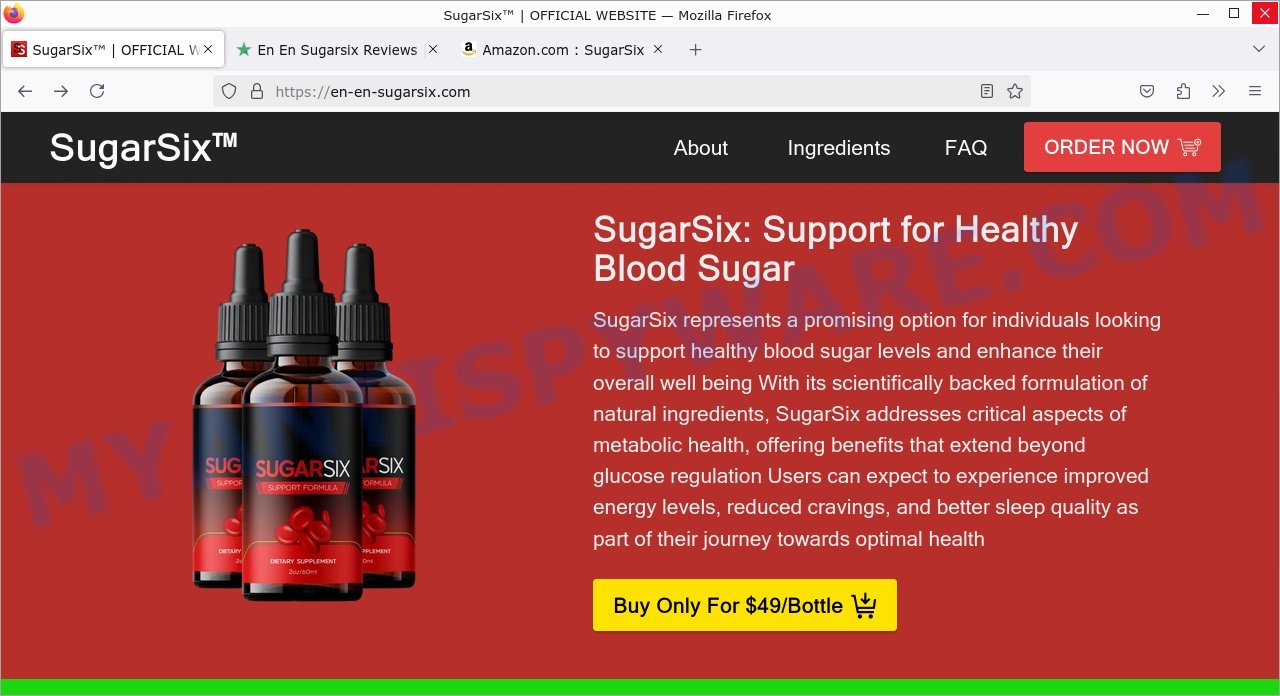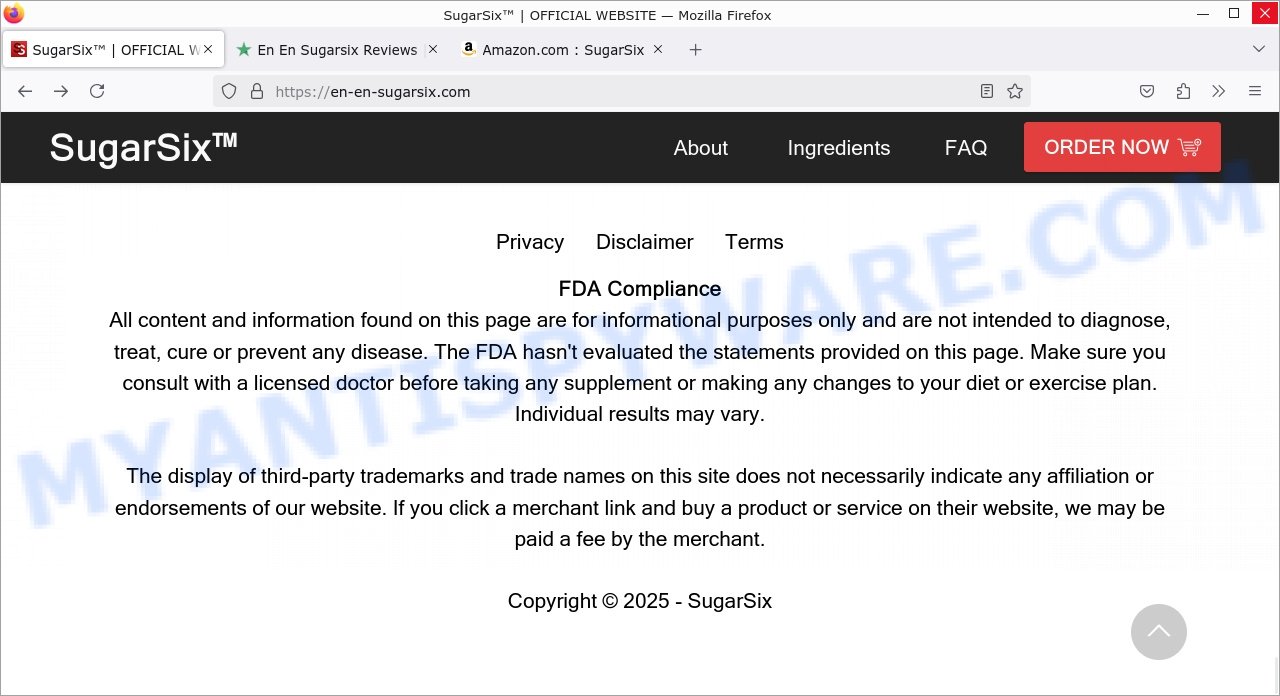Scammers are aggressively promoting Sugar Six Blood Sugar Support Drops, a product that raises many red flags. This supplement is advertised widely online, including on social media platforms, using deceptive tactics to lure in customers. The marketing for Sugar Six is full of false promises and misleading practices.
The promoters behind Sugar Six use fake endorsements, including deepfake videos of celebrities like Robert De Niro, and reference a supposed expert, Dr. Bruce Halbert, who appears to have ties to prestigious institutions such as Stanford University. However, a simple online search shows no evidence that Dr. Bruce Halbert exists. The marketing also features a “cinnamon ritual” claimed to miraculously help manage type 2 diabetes, yet there is no credible research to support this claim.
In addition, the product’s website displays a high rating and numerous reviews, but independent sources like TrustPilot or Amazon do not back these claims. The scam sites use deceptive pricing and refund policies to trick customers, often pushing unrealistic discounts and pressuring buyers into quick purchases without proper research.
If you’re considering buying Sugar Six, think twice. It is very important to talk to a healthcare professional before trying any supplement, especially when it is advertised with unrealistic claims and fake endorsements. Real health solutions should be based on sound medical advice, not on deceptive online ads. Protect your health and your money by relying on trusted treatments and information from qualified healthcare providers.
Table of Contents
🚨 Is Sugar Six a Scam?
Sugar Six is being promoted with misleading tactics that aim to trick people looking for help with blood sugar management. These tactics are common among scammers who target individuals with serious health concerns.
Key Red Flags:
- 🌐 Fake Expert Endorsements: Sugar Six uses a so-called expert named “Dr. Bruce Halbert” whose credentials and affiliation with reputable institutions like Stanford University are completely made up. Searches do not reveal any real evidence of his existence.
- ⭐ Fabricated Testimonials and Reviews: The product’s website shows high ratings and many reviews, yet independent sources like TrustPilot or Amazon do not confirm these reviews. This discrepancy indicates that the reviews may be fake.
- 🔒 Misleading Website Claims: The website uses claims such as being “FDA approved” or manufactured in “FDA registered facilities” even though dietary supplements are not approved by the FDA. The website design and domain quality also raise concerns about its legitimacy.
- ⚠️ Exaggerated Health Claims: Promotional materials claim that Sugar Six can cure or manage type 2 diabetes through a “cinnamon ritual” and other natural methods. These claims are not backed by solid scientific evidence and can be dangerous if they lead consumers to skip proper medical treatment.
- 📉 Poor Website Quality and Unverified Sources: The website features poorly designed layouts, disjointed text, and low-quality images. Such features are typical of scam sites that use quick fixes and deceptive language to lure customers.
- 👤 Misleading Use of Deepfake Technology: Scammers have been known to use deepfake videos to create fake endorsements, such as manipulated videos of celebrities like Robert De Niro. These videos are intended to give the product a false sense of trustworthiness.
- 📜 Misleading Legal and Safety Claims: The promotional materials make legal and safety claims that have no verifiable support, making them highly unreliable.
- 🔗 Dubious Purchase Links: Links on the website that say “SHOP NOW” or “Buy Now” often lead to other suspicious sites that may capture your personal information or process unauthorized transactions.
- 📈 Pressuring Sales Tactics: Urgent language and overstated benefits are used to push consumers into making quick decisions without the chance to properly verify the claims or consult a healthcare professional.
In summary, the numerous red flags surrounding Sugar Six suggest that it is part of a scam designed to deceive consumers. The use of a fake expert, fabricated reviews, exaggerated health claims, poor website quality, and misleading legal statements all point to a product that is not a genuine health supplement. It is strongly advised to avoid Sugar Six and seek advice from qualified professionals for safe and proven health solutions.
🕵️♂️ How the ‘Sugar Six’ Scam Operates
Scammers behind Sugar Six start by using targeted ads and sponsored posts on platforms like Facebook and Instagram. They publish misleading articles, fake reviews, and keyword-heavy content to push their product into top search results while hiding any negative feedback. This approach attracts people who are looking for quick fixes for blood sugar management.
When users click on these ads, they are taken to fraudulent websites that are made to look like real health outlets. These sites copy logos, layouts, and writing styles to seem trustworthy, making visitors believe that Sugar Six is endorsed by reliable sources.
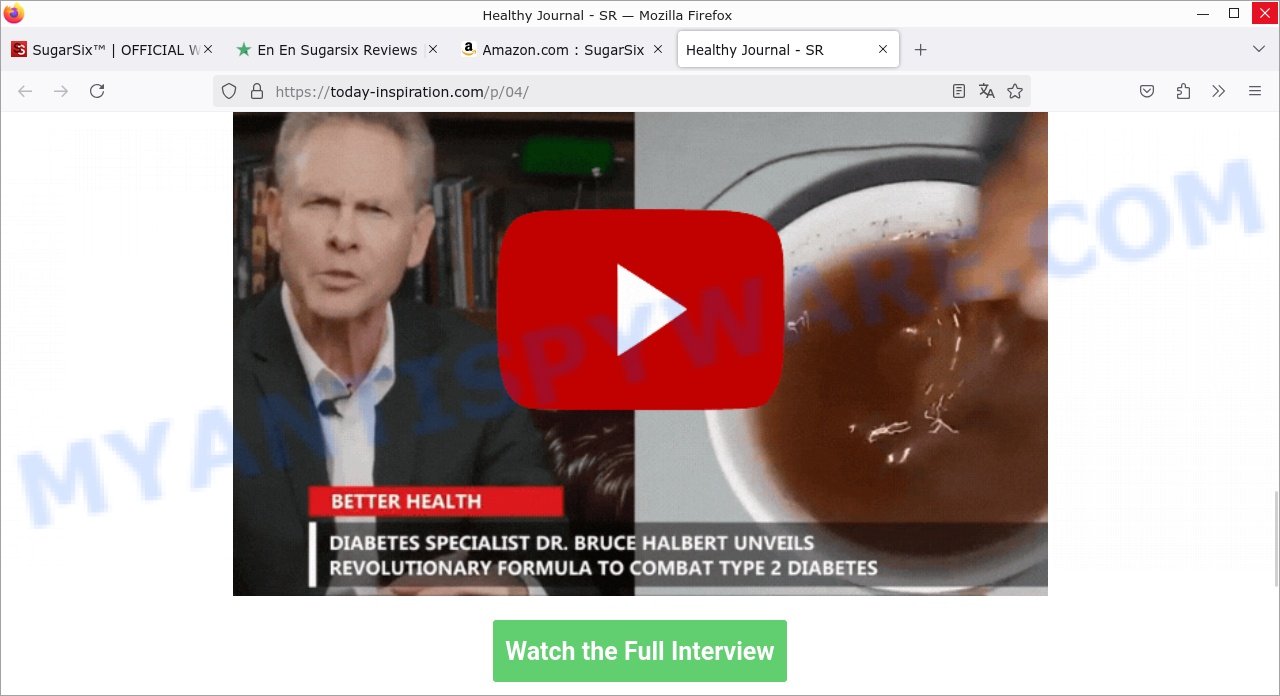
A common tactic is the use of fake expert endorsements. The scammers promote a non-existent doctor, “Dr. Bruce Halbert”, falsely claiming he is linked to reputable institutions like Stanford University. In addition, manipulated images and deepfake videos, such as a fake clip of Robert De Niro, are used to give the impression that well-known figures support Sugar Six.
The scam websites often display an excessive number of trust logos to create a false sense of security. Genuine businesses rarely need so many trust symbols on one page.
The marketing materials use urgent phrases like “Limited Time Offer” or “Exclusive Deal Today” to pressure consumers into making hasty decisions without doing proper research. Testimonials and user reviews on these sites are completely fabricated, showing dramatic improvements that never actually happen. In many cases, customers later complain about being overcharged or not being able to get a refund.
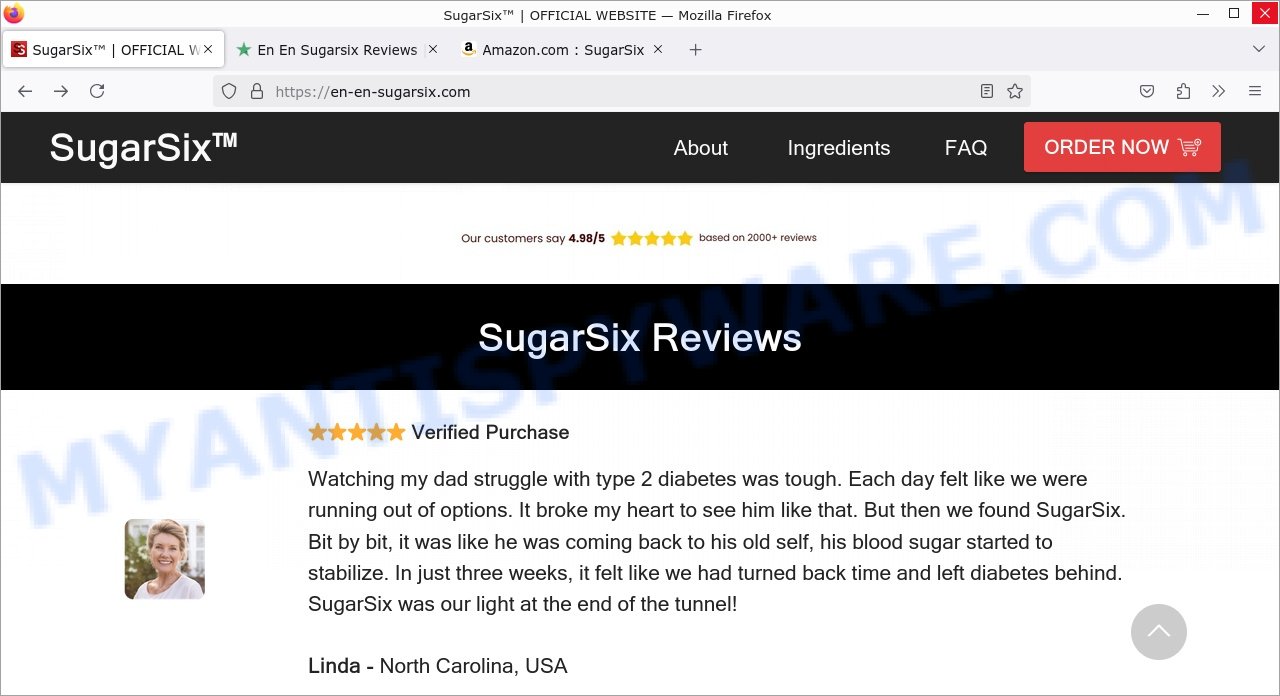
High-pressure sales techniques are common, with slogans like “Limited Time Special Pricing” and “Act Now to Save” urging immediate purchases. Some sites also advertise a low initial price but then charge much more, often enrolling buyers in automatic renewal plans that are difficult to cancel.
Moreover, the scam makes inconsistent and false claims about the product’s quality. The website might state that Sugar Six is made in a certified facility or is FDA approved, even though there is no evidence to support these claims. The poor quality of the website’s design and content can be a sign of its illegitimacy.
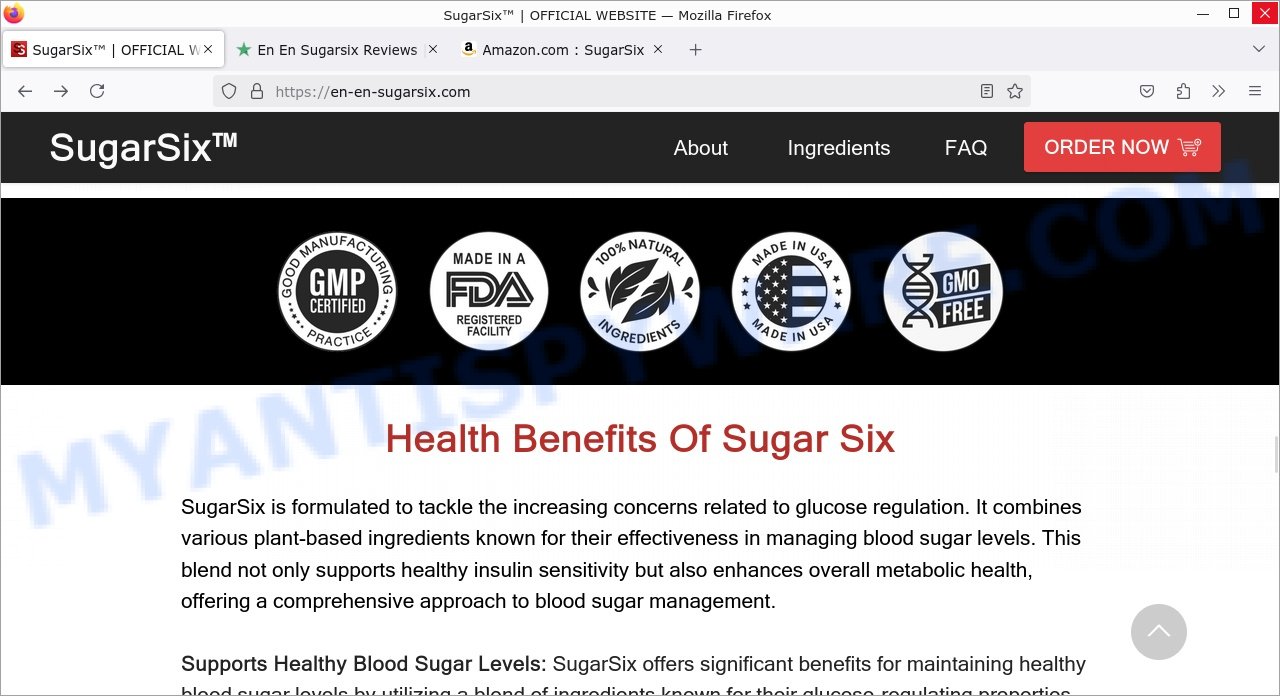
After victims make a purchase, scammers often push extra sales with unrealistic discounts or free shipping offers. Many buyers later find that they have been charged recurring fees without clear consent, and attempts to get refunds are usually unsuccessful, resulting in significant financial loss.
In summary, the Sugar Six scam uses misleading ads, fake expert endorsements, manipulated celebrity images, and fabricated reviews to trick consumers into buying a supplement that has no scientific backing. Buyers often discover too late that they have been deceived by exaggerated health claims and false promises.
🤔 Why Such Scams Are Possible
Quick Profit Motive
Scammers behind Sugar Six aim to earn money quickly by making unverified promises. They exaggerate benefits and use fake testimonials, including a non-existent expert, “Dr. Bruce Halbert”, to lure customers before the scam is exposed.
Limited Oversight on Ad Platforms
Although social media and ad platforms try to block fraudulent ads, they can’t catch them all. This allows misleading promotions for Sugar Six to slip through, reaching a wide audience of people desperate for easy health fixes.
🧠 Exploiting Human Psychology
The marketers behind Sugar Six know that many people want a simple solution for managing conditions like type 2 diabetes. The promise of a “cinnamon ritual” and miraculous results makes consumers overlook important details and warnings.
⚖️ Lack of Legal Consequences
These scams often involve complicated setups with fake credentials and multiple websites, making legal action difficult. This complexity lets scammers operate with little risk of being punished.
👤 Anonymity on the Internet
Scammers use temporary websites, fake identities, and even deepfake videos of celebrities like Robert De Niro to give Sugar Six a false sense of legitimacy. This anonymity makes it hard for authorities to track them down and stop their deceptive practices.
😱 What to Do If Scammed
If you find yourself ensnared by the Sugar Six Scam, immediate action is crucial. Here’s what you should consider doing:
🛑 Stop Further Transactions
The first step is to halt any additional transactions that might be in process. Contact your bank or credit card provider and inform them that you’ve fallen victim to a scam. They can help by blocking the card or reversing any unauthorized transactions.
📞 Report the Fraud
File a report with your local police and provide all the available evidence, such as screenshots, emails, and website URLs. Additionally, report the scam to online portals like the Better Business Bureau (BBB) at www.bbb.org or the Federal Trade Commission (FTC) at reportfraud.ftc.gov. If you’re in another country, reach out to your national consumer protection agency.
💻 Take Screenshots
Before the scam website gets taken down or changes, make sure to capture screenshots of your transactions and communications. These can serve as evidence if you decide to pursue legal action.
⚖️ Consult Legal Advice
Speak to a legal advisor about your situation. While pursuing legal action may be time-consuming and costly, it could be a possible avenue for recovering your lost money.
📢 Share Your Experience
Use social media platforms to share your experience and warn others about the scam. Your story could prevent someone else from falling victim to the same or similar scams.
Summary Table
| Factor | Observations | Impact on Legitimacy |
|---|---|---|
| Product Description | Marketed as a natural supplement to support healthy blood sugar levels, improve energy, and aid in weight management. Claims include rapid improvements in glucose control with a “cinnamon ritual”, yet there is no credible scientific evidence to support these benefits. | Negative (Unsubstantiated health claims and misleading descriptions) |
| Reviews | Displays high ratings and positive testimonials on its website, but these reviews are not verified by independent platforms. External sources like TrustPilot and Amazon show little to no credible reviews. | Negative (Fabricated reviews and lack of independent verification) |
| Marketing Channels | Uses deceptive tactics such as fake expert endorsements (e.g., a non-existent “Dr. Bruce Halbert”) and deepfake videos of celebrities to create a false sense of legitimacy. | Negative (Deceptive marketing with fabricated endorsements and manipulated media) |
| Price | Promoted at attractive introductory prices with claims of discounts, but there are reports of hidden fees and unauthorized billing practices. | Negative (Misleading pricing and potential hidden charges) |
| Real Functionality | Claims to provide significant health benefits, such as stabilizing blood sugar levels overnight, without any clinical evidence or verified scientific studies to back these assertions. | Negative (Lack of scientific support for claimed benefits) |
| Company Contacts | Offers limited and non-transparent contact information. Customers have reported difficulties in reaching customer service and resolving issues related to refunds and recurring charges. | Negative (Poor customer support and lack of transparency) |
| Product Source | Claims to be manufactured in FDA-registered and GMP-certified facilities in the USA, yet there is no verifiable third-party evidence or clear manufacturing details available. | Negative (Unverifiable manufacturing claims) |
| Safety Claims | Emphasizes the use of natural ingredients and safety, but fails to provide adequate information on potential side effects, interactions, or a detailed safety profile. | Negative (Incomplete safety information and misleading implications) |
| Website Transparency | Utilizes high-pressure sales tactics like fake countdown timers, limited stock alerts, and hidden subscription terms. The website is registered anonymously and has links to other suspicious operations. | Negative (High-pressure tactics and lack of transparency) |
| Refund Policy | Claims a money-back guarantee, but many users report significant difficulties obtaining refunds or stopping recurring charges once they have purchased the product. | Negative (Misleading refund policy and poor consumer experience) |
Conclusion
The Sugar Six supplement is a scam, relying on fake reviews, non-existent experts, and manipulated videos to create a misleading image of trustworthiness. Scammers behind this product use deepfake technology and false endorsements, including the fake expert “Dr. Bruce Halbert” and altered videos of celebrities like Robert De Niro, to trick potential buyers.
Instead of providing real benefits, consumers are misled by bogus testimonials and exaggerated health claims that suggest the product can quickly stabilize blood sugar, promote weight loss, and improve overall health. The website uses urgent language and deceptive pricing strategies, resulting in customers sometimes paying more than expected, while customer support is often unresponsive.
Bottom Line: Avoid Sugar Six. Always verify any supplement that makes unrealistic health claims, especially when the marketing relies on deceptive tactics and fake testimonials.
Stay cautious and do your research; if an offer seems too good to be true or depends on fraudulent endorsements, it is most likely a scam.
